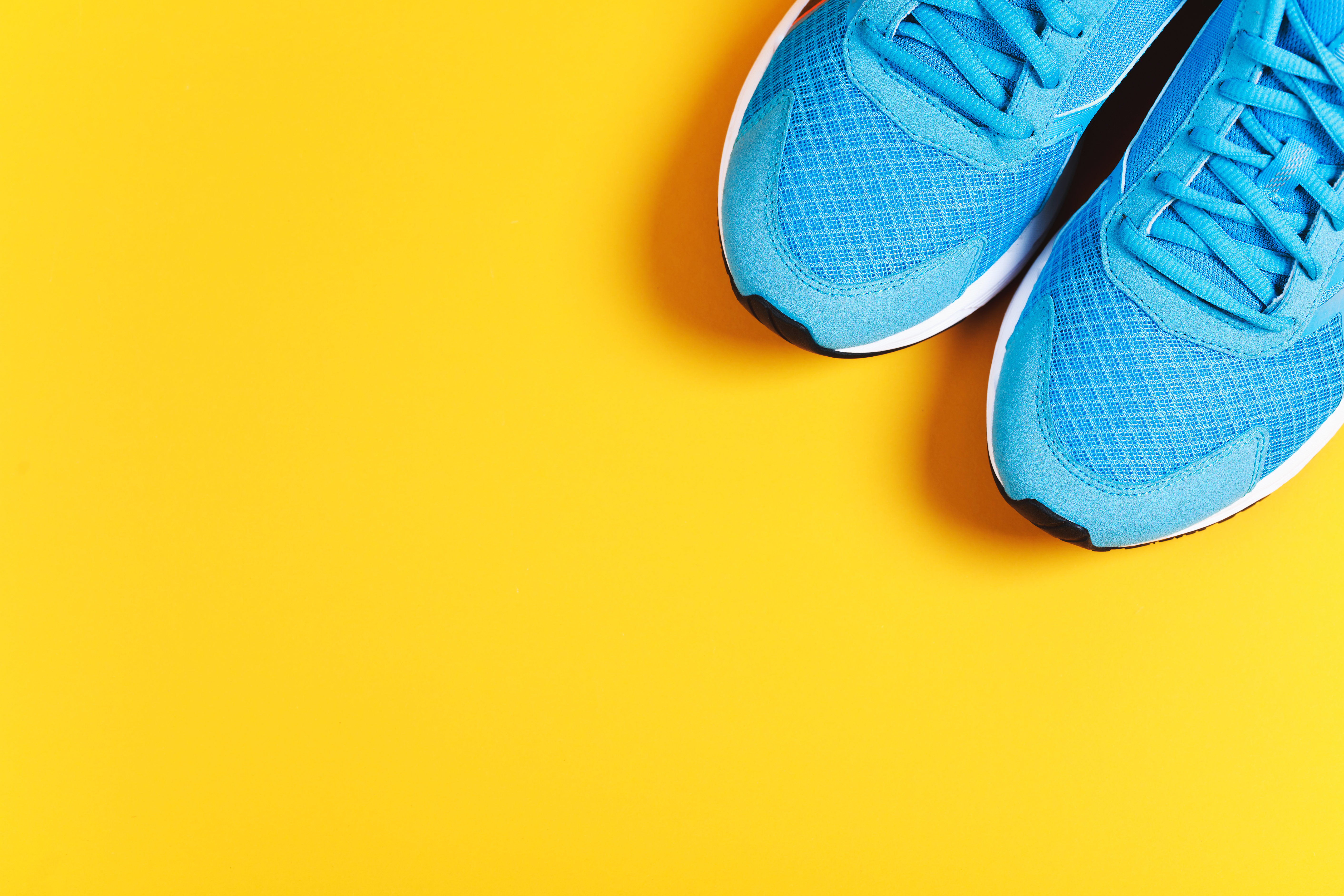
I like working. I’ll fortunately jog for hours (and sometimes do, throughout marathons). However ask me to carry out a push-up, and I’d cry. I actually detest power coaching.
Sadly for me, it’s extraordinarily good for you—and for runners who need to get quicker. So I made a decision so as to add in two strength-training periods per week in preparation for working the Boston Marathon this spring.
I wished workout routines designed to enhance my tempo, however didn’t need to spend cash on a private coach. Uncertain of the right way to begin, I turned to ChatGPT.
The chatbot didn’t give me the exercise routine I hoped for—and after following its suggestions for practically a month, I used to be no nearer to liking power coaching. However I discovered some issues alongside the best way which may find yourself serving to me turn out to be a greater runner.
Lesson 1: ChatGPT is just not a lot of a coach
OpenAI’s free AI chatbot is educated on huge quantities of knowledge from sources across the Web so it may reply prompts with human-like textual content. To check out its exercise suggestions, I first requested it to create a marathon coaching plan.
As a working coach who’s completed greater than a dozen marathons, I’ve a great sense of what a strong coaching schedule seems like. The ChatGPT outcomes have been—not that. Though it informed me to run about six days per week at varied speeds and distances (thus far, so good), it listed hill sprints and intervals with out important particulars like how briskly or far. It additionally gave me no runs longer than 14 miles, other than the suggestion to run a full marathon per week earlier than the top—one thing no professional coach would ever advise, since that’s far too taxing on the physique to be helpful, particularly so near race day. I requested the query twice extra, including particulars about my health stage and targets. Now, it solely informed me to run as much as 12 miles. Compared, the longest run on most respectable marathon plans is 18 to 22 miles.
Learn Extra: Your Mind Does not Need You to Train
It’s not arduous to discover a first rate coaching plan on-line. So though I didn’t anticipate ChatGPT to invent a mindblowing routine, I used to be stunned that the plans it spat out have been so underwhelming and at occasions incomprehensible. However perhaps I shouldn’t have been. What ChatGPT does so nicely is generate “a human-like, pure language output,” explains Richard Bayly, vice chairman of product, AI, and knowledge at PEAR Well being Labs, which owns the AI-powered health app Aaptiv. However whereas the chatbot is designed to sound prefer it is aware of what it’s speaking about, it doesn’t.
ChatGPT’s major ability lies in sounding human, not in giving skilled suggestions. The web site even embody a disclaimer to “test your information,” stating that the chatbot is just not supposed to offer recommendation. Even so, persons are already utilizing the location for exercise recommendations. (OpenAI didn’t reply to a request for remark for this piece.)
Lesson 2: ChatGPT generated first rate train concepts
Though it failed my marathon plan litmus take a look at, I nonetheless wished to see if ChatGPT may give me some concepts for power coaching. After asking “which physique weight–solely power coaching workout routines will assist me run quicker,” it listed 12 workout routines that appeared pretty strong, hitting virtually all the main muscle teams utilized in working. However as I began to do the exercise, I spotted I didn’t have any data on units, reps, or whether or not I ought to do every train separately versus in a circuit.
I’m not the one one who has found ChatGPT’s exercises are lacking basic particulars. One January 2024 research evaluating ChatGPT-generated exercises discovered its train suggestions have been solely 41% complete—which means its solutions didn’t embody all the American School of Sports activities Drugs’s six parts of train prescription: frequency, depth, time, sort, quantity, and development.
Learn Extra: This Is the Greatest Time of Day to Work Out
But the researchers did discover the exercises to be 90% correct. Many of the inaccuracies concerned telling folks to get medical clearance to train after they didn’t want it. Which may appear innocuous, however Linda Pescatello, a professor within the division of kinesiology on the College of Connecticut and one of many research’s authors, says this might discourage folks from exercising altogether. “Requiring somebody to get medical clearance is a significant deterrent to endeavor an train program,” she says.
Completed proper, AI has actual potential to get extra of us shifting. In a latest report funded by the sportswear firm ASICS, 62% of ladies named the excessive value of trainers as a significant barrier to exercising. A free, simply accessible chatbot providing focused, on-demand exercise recommendation on a mass scale may very well be a boon to public well being.
Lesson 3: The chatbot’s exercises are boring and uninspired
Two weeks into my strength-training plan, I discovered myself skipping sure strikes and swapping in others as a substitute. The issue was, I didn’t belief Coach ChatGPT. Did I actually need to do burpees, or had the chatbot merely come throughout them in some random “exercise for runners” article? The solutions hadn’t given me any data on why I used to be doing the strikes, or hyperlinks to be taught extra, so I saved questioning the efficacy of the workout routines.
Additionally, the exercise was boring, made up of primary American gym-class workout routines that felt cookie-cutter, regardless of all the non-public information I’d included in my prompts.
“There’s the science of train prescription, and there is the artwork,” says Pescatello. A robotic might need accomplished my prescribed exercise and gotten outcomes, however I’m far too human to pump out the identical 12 bland strikes with gusto—particularly and not using a coach to carry me to it. “It would not account for humanity in any respect,” says Kristie Larson, a New York–based mostly private coach. “Positive, it’d write an excellent coaching plan—for those who have been additionally a machine.”
Lesson 4: Flip to a human for those who get injured
At one level, my sartorius muscle in my thigh began to behave up. I requested ChatGPT, “Can I nonetheless run if my sartorius muscle hurts?” It gave me a imprecise, long-winded reply that wasn’t precisely “no,” however instructed I follow low-impact actions like strolling if the “ache is delicate and enhancing.”
I introduced this up with New York-based adidas working coach Jessica Zapotechne. Was this sound or overly conservative recommendation? “That query makes me take into consideration a subject that I discuss with athletes about lots, which is distinguishing between ache and discomfort,” she tells me. There are various kinds of hurting, and figuring out what is solely a part of coaching versus indicators of an damage requires “an inventory of inquiries to undergo,” she says. That’s one other downside with AI coaches: They don’t ask questions, the best way a human coach usually would.
Learn Extra: Ought to I Use a Foam Curler?
“You have to be very cautious about your inputs, as a result of when you have unhealthy inputs, you are going to have unhealthy outputs,” says Bayly of PEAR Well being Labs. “A generative AI chatbot is relying largely on data that is extensively obtainable. I do not suppose there’d be a variety of distinction between a generic program that you simply may be capable to obtain off the Web versus one thing the chatbot may return if you’re not particular sufficient.” AI-based exercise apps like Aaptiv have customers reply a number of questions on their targets, expertise, age, and extra upfront with a purpose to generate customized suggestions, that are then refined additional by monitoring what the person does on the app, à la Netflix.
The difficulty is, somebody who’s trying to AI for train concepts most likely doesn’t know precisely what particulars they’d have to share to get essentially the most useful reply.
“The one who has the ability to put in writing an awesome command most likely has sufficient ability to simply write the exercise,” says Chicago-based power coach Elisabeth Akinwale. However, she provides, if somebody is asking ChatGPT for exercise assist, they may not have the data to appreciate when it spits out one thing wacky, like my marathon coaching plans. “They do not have the discernment to say, no, that does not sound correct,” she says.
So what’s ChatGPT good for, on this planet of health?
In a phrase: “Selection,” says Pescatello. “One of many capabilities AI has in any career is it may be an awesome search instrument. With cautious prompting, you might specify your preferences and an output may very well be generated that provides you extra choices than you are feeling there are actually.” Larson echoes that sentiment, saying it might be finest utilized by somebody skilled who’s simply trying to combine issues up with a brand new concept so as to add to their rotation.
Nonetheless, you’d have to suit inside a slim inhabitants to get the perfect outcomes. Pescatello says her crew discovered that ChatGPT’s suggestions are at the moment biased towards adults and lack cultural consciousness or concerns for disabilities. Their evaluation additionally scored the readability on the school stage.
Learn Extra: The three Most Efficient Train Strikes That Don’t Require Gear
Regardless of ChatGPT not turning out to be the free private coach I wished, I’m nonetheless doing a few of its really helpful strength-training workout routines usually. I haven’t gotten quicker but, although we’ll see what occurs on marathon day.
I discover I preserve going again to ask ChatGPT my Three a.m. exercise questions that really feel too foolish or inconsequential to hassle one other human with. It’s confirmed most helpful after a session speaking to a sports activities dietitian, after I wanted a easy clarification of “anabolic potential.” The primary few outcomes Google introduced up have been too sciencey, however after I requested ChatGPT to outline it for an eighth grader, I received precisely what I used to be in search of: “the physique’s potential to construct and restore tissue, particularly muscle tissues.” I’m lastly utilizing it for what it’s designed to do: to not give train recommendation, however to generate natural-sounding, easy-to-understand language.



